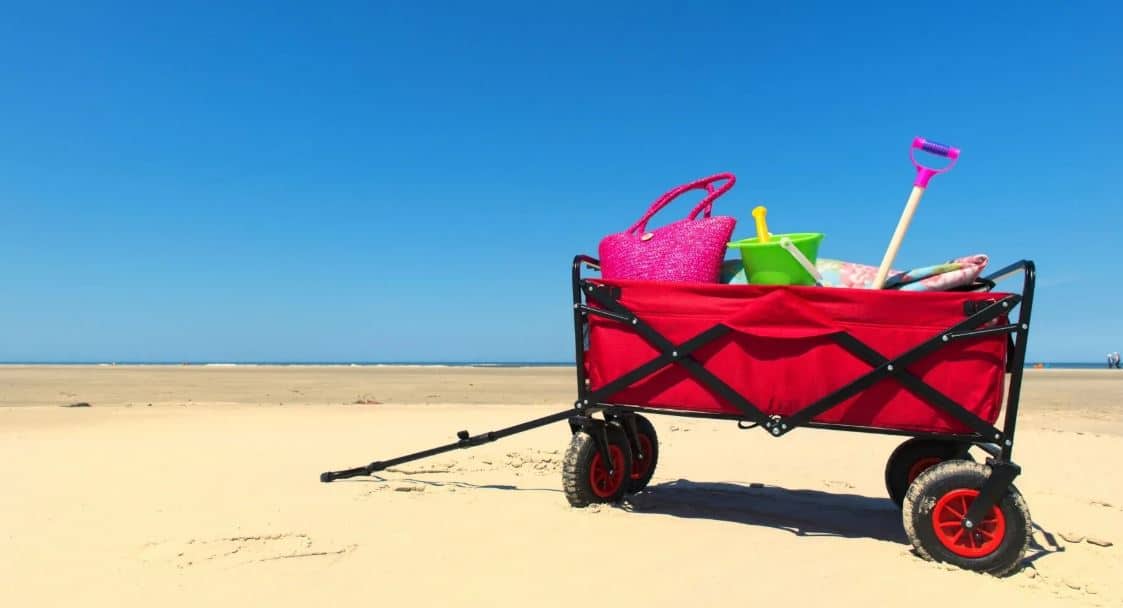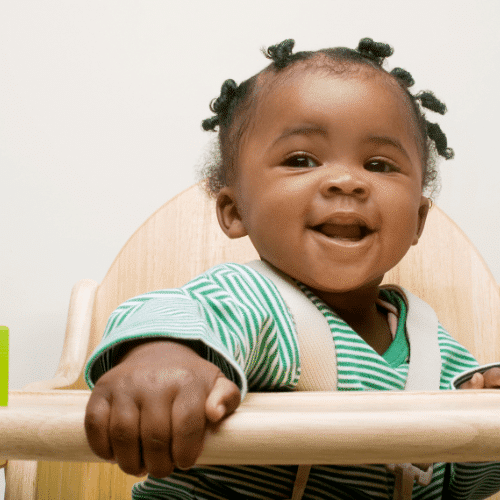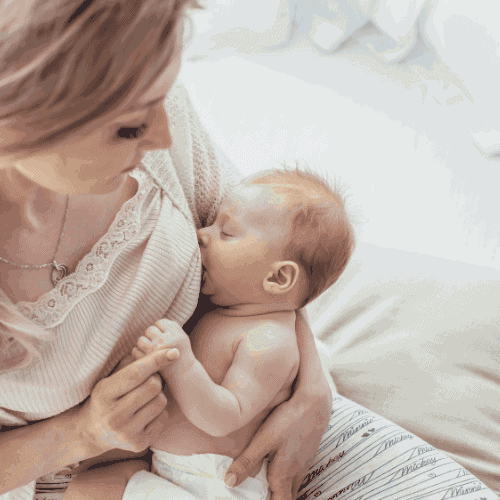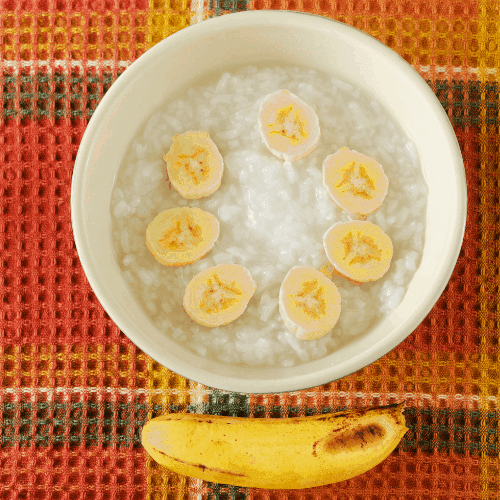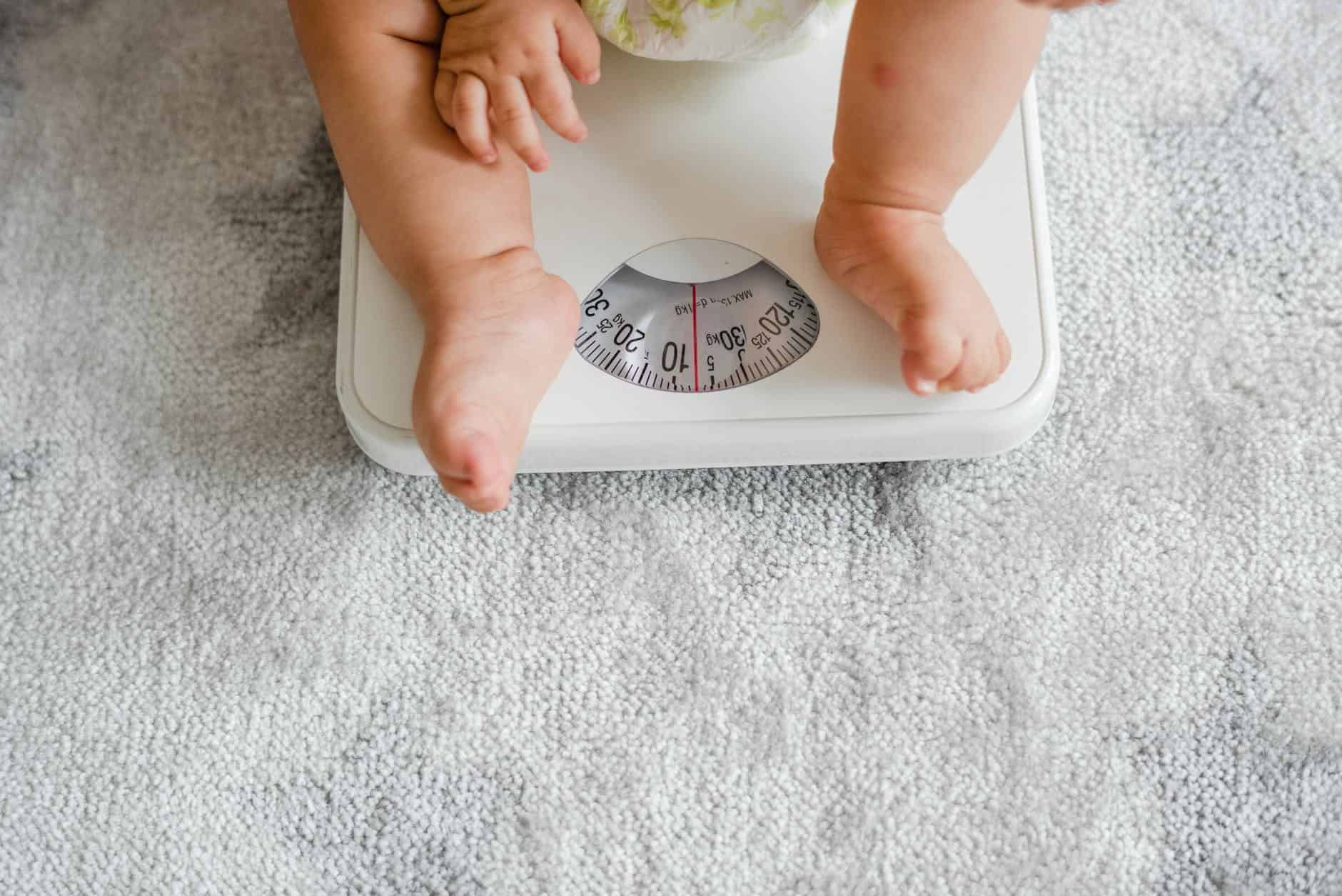You can change your baby’s diapers on the floor, but for some parents, a changing table may be a great option. It could be that you have a disability or some other physical issue that makes repeatedly sitting on the floor and then getting up again uncomfortable.
Any table is suitable, but perhaps you want a dedicated item on which you change your baby. After all, using the kitchen table may have some people raising their eyebrows.
There are several things to consider when buying a changing table, such as the safety of the aspects of the item. You want your baby to be secure when they are laying on the table. To minimize any stress or strain on your back, you want the table to be at a comfortable height for you.
If you are wondering if a changing table is worth it, we will run you through the benefits of having one. Also, we will let you know what the ideal height is for as well as how to keep your baby safe while changing her/his diapers.
As an Amazon Associate, I earn from qualifying purchases. The links below may be affiliate links. Please read my disclosure policy for more information.
Why should I get a change table?
A changing table is a stand-alone piece of furniture that provides convenience when it comes to diaper-changing times.
However, when you use the table there is some personal health do’s and don’ts that you want to pay attention to. These help you as a mother avoid developing physical problems.
Changing tables also provides your child with safety features that your standard table doesn’t have. On top of that, they provide convenient storage facilities.

Take care of your back when using the table
For some women, there can be postpartum back issues. According to Spine-Health.com, postpartum back pain can happen while performing activities that involve body movements such as lifting, or bending.
So, when you are using the changing table, pay attention to the way you stand as well as how lift your baby while changing the diapers.
When using the table avoid:
- using one that is too low for you.
- putting strain on your back to reach the table
- keeping a distance from you and the table that causes you to stretch
- twist your back to dispose of the diapers
Things that won’t affect your back while taking care of your baby are:
- bending from your hips
- stand close to the table
- face the table straight on to prevent yourself from twisting
- have the table at the ideal height for you
If you suffer from back issues, seek medical advice on how best to look after your spine while also taking care of your baby.
Keeping your baby is safe

The main factor behind a baby being injured while on a changing table is being left unattended by the parent. Never leave your child alone when you are changing the diapers, nor use the table as a makeshift cot.
Consider the quality of the table. This is a question of budget, but get the best one that you can afford. Things such as railings and pad/mat straps need to be a minimum requirement.
Railings
Most changing tables come with barriers or railings that keep your child confined safely within the table. You may find some models only have three of these guards.
That could be considered acceptable if you use a wall as the fourth barrier. For the extra, cautious among you consider buying a table that has all four railings included.
The strap
Don’t be afraid to look at the stitching of the strap. How quickly will the thread deteriorate?
Pay attention to how well the strap is fastened to the table. Give it a couple of good tugs to test it out.
Grab a change mat and use the strap to secure the mat to the table. Push and pull at the mat to see how well the strap keeps it in place.
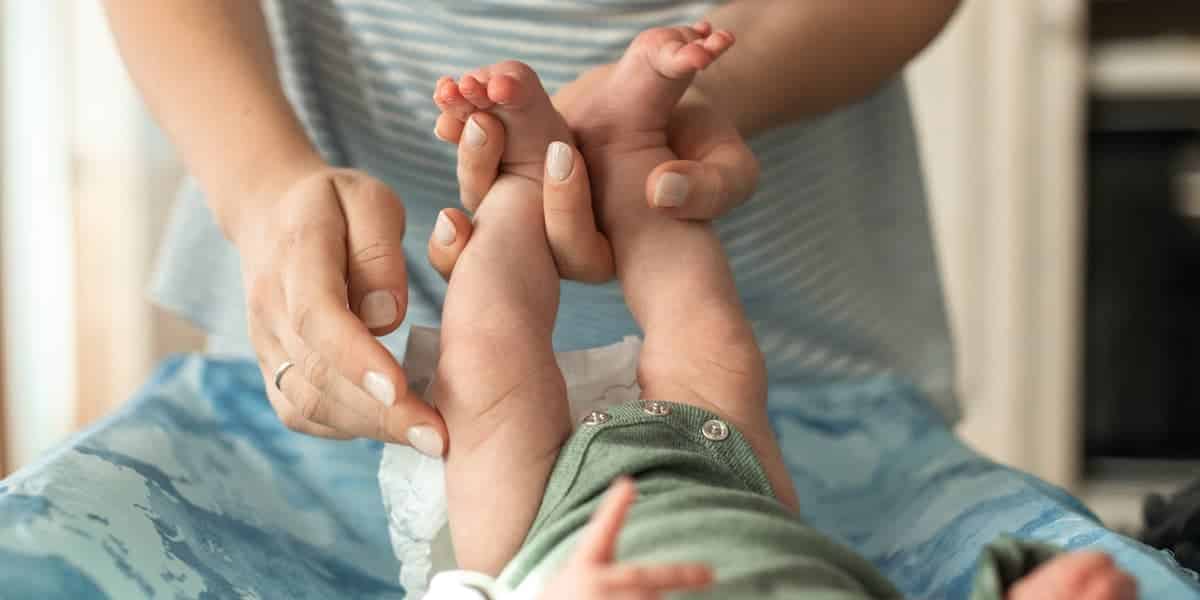
Restrains
For children that just can’t keep still during changing time, you can get a restraint. That sounds like child cruelty, but it isn’t.
Imagine if you are trying to change your baby’s diapers, yet they are struggling against you. There is the possibility that your wee one accidentally sustains an injury. Restraints help to keep your baby safe.
Everything is readily accessible
Look at the drawers and other compartments that your potential changing table offers. The usual diaper changing kit consists of:
- fresh diapers
- ointment or cream
- baby wipes
- towels/blanket
- talcum powder
- baby toys to keep your child entertained while you do your thing
Instead of having to scavenge the gear each time you need to change your baby, you can pop it all into the storage space of your changing table.
Babys learn by interaction with their surrounding environment. When your child gets older, she or he may be tempted to explore what’s in the drawers.
That could lead to little fingers getting stuck or to your child wanting to pull everything out. To prevent these scenarios, get stoppers for your drawers.
Also, any creams, ointments, or other hazardous goods need to be kept out of reach from the baby.
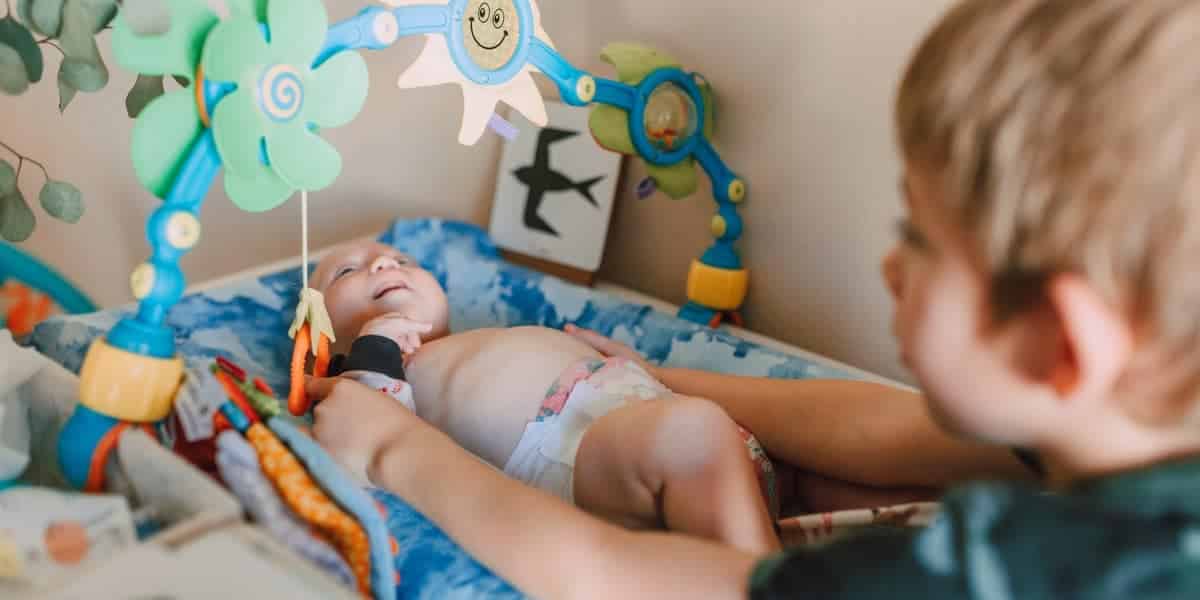
They can be portable
Some changing tables come with wheels that allow you to relocate them. It’s convenient if you are busy in one place of the house for a while.
You can move the table to where you are. Now mum (or dad), the baby, and the changing table are all together. Simple and easy.
How high should the table be?
On October 7, 2016, the BABIES Act (Bathrooms Accessible In Every Situation Act) came into effect. It was created to ensure that all federal places have baby changing tables publicly available in both male and female restrooms.
From 1990, the ADA (Americans with Disabilities Act) extended the availability of changing tables to restaurants, hotels, libraries, arenas, and other public places. The ADA stipulates that the height of these tables needs to be 27 inches.
However, for changing tables that are bought for private use, the height can vary. The range is anywhere from 30 to 43 inches, with the typical height being between 34 to 36 inches.
Before you hand over your money, it pays to try the height of the table in the store. The rule of thumb is that the table should be the same as your elbow height.
There are height-adjustable tables available on the market.
One example is this model from EGREE. You can adjust the height and it doubles as a massage table.
The wheels provide silent and easy maneuverability over a range of surfaces. When you have finished with the table, you can fold it up and store it away.
Keep the changing routine consistent
Changing time can be upsetting for some infants. You can minimize the stress by having a standard way in which you swap over the nappies.
The routine needs to be something that you decide matches your situation. That doesn’t mean that you can’t ask for advice from other parents.
It may require some trial and error until you discover that “A-ha” moment.
Doing the process the same way every time allows your baby to feel like they have some kind of control over what’s happening. They know what to expect and that may help to alleviate any fussing your baby puts up.
Maintain your table
Your changing table, like any other piece of equipment around your home, can get old and tired. Regular maintenance checks will help you spot potential problems before it’s too late.
Look at the straps, if there is any sign of fraying, consider replacing them as soon as possible. Contact your manufacturer to find out how to do so.
Examine the joints and any support beams of the table. There can be pressure placed on these as your baby grows and becomes heavier.
Consistently pulling off and putting on the railings may cause their supports to weaken. Replace them if you find that they have become too loose or move freely when slotted into the table.
For height-adjustable tables, test the height locking mechanisms. If they fail, you run the risk of the table collapsing while you are changing your baby’s diapers.
Read your instruction manual on how to care for and maintain the changing table. Reach out to the manufacturer to ask about replacing parts of the table.
For those tables that are beyond repair, go out and purchase a new one.
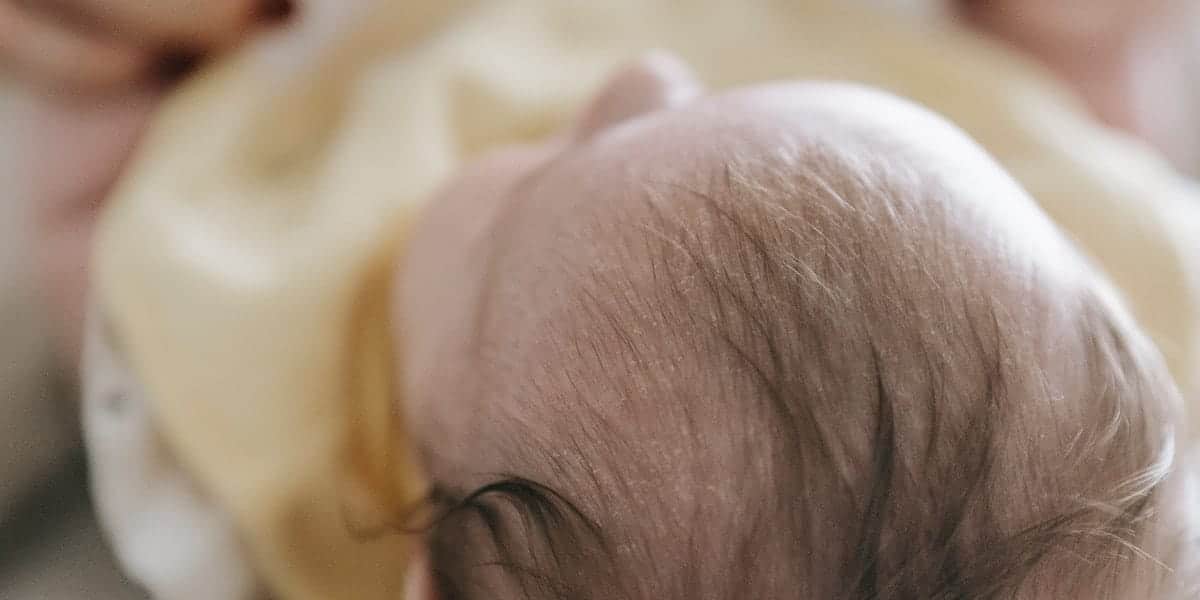
Conclusion
A diaper changing table isn’t an absolute necessity, yet some people recommend them because of the convenience. These types of tables provide a dedicated place at which you can change your baby’s diapers.
For mothers suffering from postpartum back issues, ensure that you don’t twist your back while attending to their baby. Nor do you want to bend too far over the table.
That’s where finding the ideal table height comes in. When you are shopping for a changing table, try it out in-store to see if the height is comfortable for you.
Adjustable-height tables can cater to the height differences of mum and dad when both are involved in changing the diapers.
Regular inspection and maintenance will help to prolong the life of the table.
Then, when your baby outgrows the table, you can think about passing it on or incorporating it somehow into your house decor.


